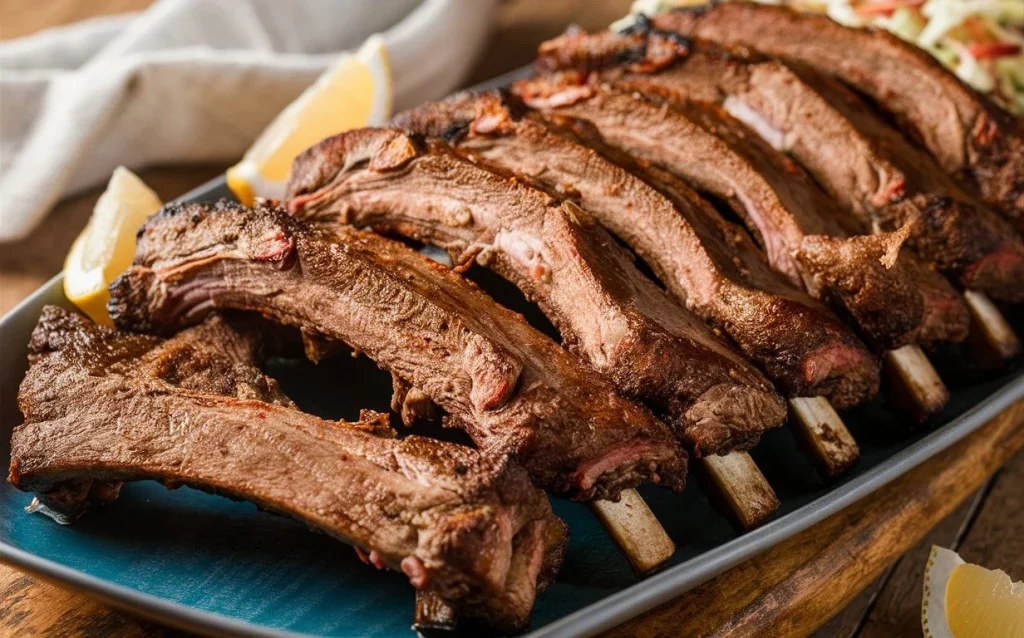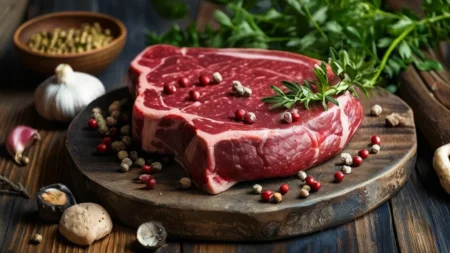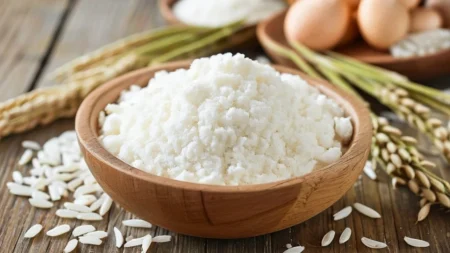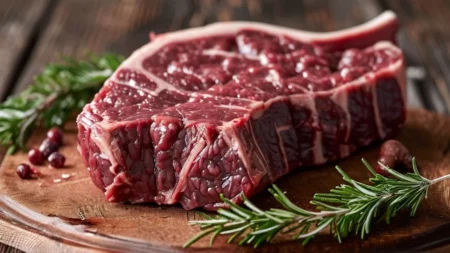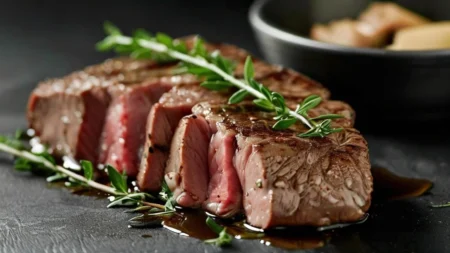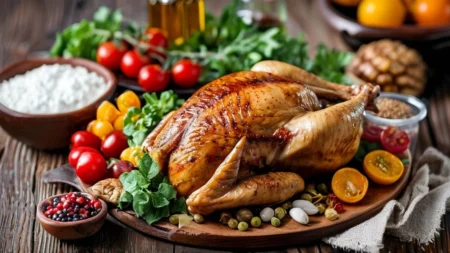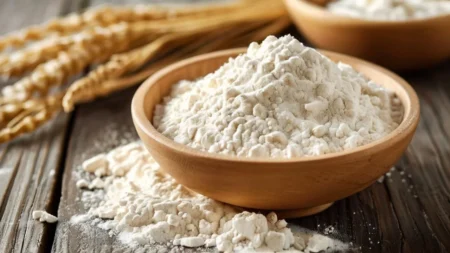Embark on a flavorful journey through the world of beef ribs in this comprehensive guide. Learn how to select the best beef rib cuts, prepare them for smoking, and master the art of transforming them into tender, juicy, and smoky perfection. Discover the secrets to creating a mouthwatering dish that will impress your family and friends. Whether you’re a seasoned pitmaster or a backyard grilling enthusiast, this article has everything you need to elevate your beef rib game.
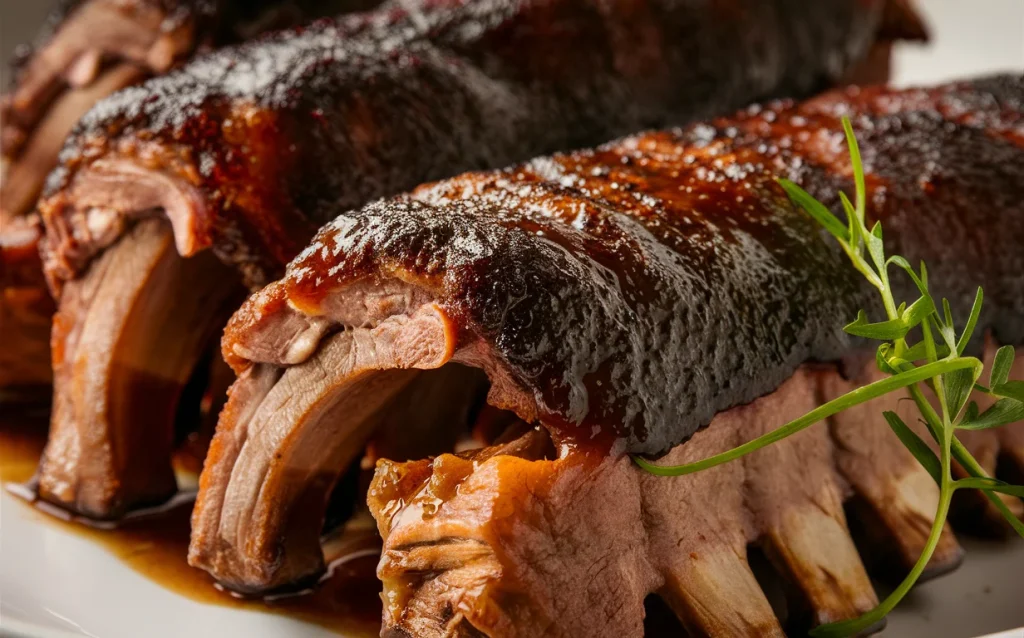
Key Takeaways
- Explore the different types of beef ribs, including beef short ribs and beef back ribs.
- Understand the importance of proper preparation, such as trimming, seasoning, and brining or dry rubbing, for smoked beef ribs.
- Learn how to choose the right smoker and wood to achieve the perfect smoke flavor.
- Discover the optimal temperature and time management for smoking beef ribs.
- Explore mouthwatering serving and side dish pairings to elevate your smoked beef rib experience.
Exploring the Flavorful World of Beef Ribs
Beef ribs are a versatile and delicious cut of meat that come from various parts of the cow. They are a popular choice for barbecue and slow-cooking enthusiasts, offering a unique blend of flavors and textures. To fully appreciate the nuances of beef ribs, it’s essential to understand the different types and their distinct characteristics.
What are Beef Ribs?
Beef ribs are the large, meaty bones that run along the rib cage of a cow. They are known for their rich, beefy flavor and tender texture when cooked properly. Beef ribs are a staple in many barbecue and grilling traditions, prized for their ability to absorb smoke and develop a flavorful bark, or crust, on the exterior.
Types of Beef Ribs
There are two main types of beef ribs: beef short ribs and beef back ribs. Beef short ribs are meatier and come from the plate primal, located near the belly of the cow. These ribs are typically thicker and more marbled, resulting in a richer, more tender bite. Beef back ribs, on the other hand, are leaner and come from the rib primal, located closer to the spine. They offer a more delicate texture and a slightly different flavor profile compared to their short rib counterparts.
Regardless of the type, beef rib cuts and beef rib anatomy play a crucial role in determining the overall eating experience. Understanding the unique characteristics of each beef rib cut can help you make informed choices and prepare them to perfection.
Beef Ribs
Beef ribs are known for their rich, beefy flavor profile and tender texture when cooked properly. They are high in protein, minerals, and beneficial fatty acids, making them a nutritious and satisfying addition to any meal. Beef ribs can be prepared in a variety of cooking methods, including grilling, smoking, braising, and oven-roasting, each method bringing out different nuances in the meat.
When it comes to beef rib nutrition, these cuts are a powerhouse of essential vitamins and minerals. They are an excellent source of iron, zinc, and B-complex vitamins, all of which play crucial roles in maintaining overall health and wellness. Additionally, the beneficial fatty acids found in beef ribs, such as oleic acid and conjugated linoleic acid (CLA), have been linked to a range of health benefits, including improved heart health and reduced inflammation.
The beef rib flavor profile is often described as rich, savory, and deeply beefy, with a hint of sweetness that pairs well with a variety of seasonings and sauces. When smoked or grilled, the beef ribs develop a delectable caramelized crust that adds an extra layer of complexity to the overall taste experience. Alternatively, braising or oven-roasting the ribs results in a more tender, fall-off-the-bone texture, allowing the natural flavors of the meat to shine.
Ultimately, the beef rib cooking methods you choose will depend on your personal preferences and the desired outcome. Whether you opt for the smoky, charred notes of grilled or smoked beef ribs, or the succulent, fork-tender results of braising or oven-roasting, one thing is certain: these versatile cuts are a must-try for any beef lover seeking a truly exceptional dining experience.
Preparing Beef Ribs for Smoking
Proper preparation is the foundation for achieving the perfect smoked beef ribs. Begin by selecting the right cut – whether it’s the meatier beef short ribs or the leaner beef back ribs. Trimming off any excess fat and membrane is a crucial step, as it allows the seasoning to penetrate the meat and enhances the overall texture.
Trimming and Seasoning
Once the ribs are trimmed, it’s time to season them. You can opt for a flavorful dry rub or brine the ribs to infuse them with the perfect balance of salt and spices. Carefully rub the seasoning all over the surface of the ribs, ensuring even coverage. This step will help the ribs develop a beautiful bark and imbue them with the smoky goodness you crave.
Brining or Dry Rubbing
For a more pronounced flavor, consider brining the ribs before smoking. This process involves submerging the ribs in a saltwater solution, which helps to tenderize the meat and lock in moisture. Alternatively, you can apply a robust dry rub made with a blend of spices, herbs, and aromatics. The dry rub will create a flavorful crust on the ribs as they smoke.
By carefully selecting the right cut, trimming the ribs, and seasoning them with a brine or dry rub, you’re well on your way to creating the ultimate smoked beef ribs that will delight your family and friends.
Mastering the Art of Smoking Beef Ribs
Smoking beef ribs is an intricate process that requires a keen eye for detail and a patient approach. The key to achieving mouthwatering, tender, and deeply smoky beef ribs lies in selecting the right equipment, choosing the perfect wood, and precisely managing the temperature and cooking time.
Types of Smokers
When it comes to smoking beef ribs, the type of smoker you choose can make all the difference. From classic charcoal smokers to modern electric and pellet models, each style offers its own unique advantages. Charcoal smokers provide an authentic, wood-fired flavor, while electric and pellet smokers offer precise temperature control and convenience. Carefully consider the features that best suit your needs and smoking preferences to ensure the best smokers for beef ribs.
Choosing the Right Wood
The wood for smoking beef ribs plays a crucial role in imparting the desired smoke flavor. Opt for hardwoods like oak, hickory, or mesquite, which provide a robust, earthy aroma that complements the natural beefiness of the ribs. Experiment with different wood blends to find the perfect balance of smoke intensity and complementary flavors.
Temperature and Time Management
Maintaining the right temperature and time for smoking beef ribs is essential for achieving the perfect texture and flavor. Generally, you’ll want to smoke the ribs at a low and steady temperature, around 225-250°F, for 3-5 hours, depending on the thickness of the cut. Monitor the internal temperature closely and be prepared to adjust the cooking time as needed. Mastering the beef rib smoking techniques will ensure your ribs emerge from the smoker tender, juicy, and infused with a deep, smoky essence.
| Smoker Type | Advantages | Recommended Wood | Ideal Temperature Range | Approximate Cooking Time |
|---|---|---|---|---|
| Charcoal Smoker | Authentic wood-fired flavor | Oak, Hickory, Mesquite | 225-250°F | 3-5 hours |
| Electric Smoker | Precise temperature control, convenient | Oak, Maple, Applewood | 225-250°F | 3-5 hours |
| Pellet Smoker | Consistent temperature, easy to use | Oak, Hickory, Cherry | 225-250°F | 3-5 hours |
Serving and Enjoying Smoked Beef Ribs
The final step in the journey of smoked beef ribs is the serving and enjoyment. After the ribs have been cooked to perfection, it’s important to allow them to rest before slicing and serving. This resting period allows the juices to redistribute throughout the meat, ensuring a tender and flavorful bite.
Resting and Slicing
Once the smoked beef ribs have reached their desired doneness, transfer them from the smoker and let them rest for 10-15 minutes. This resting period is crucial, as it allows the fibers to relax and the juices to settle, resulting in a more tender and juicy final product. After the rest, use a sharp knife to slice the ribs between the bones, revealing the succulent meat within.
Side Dish Pairings
Pair your smoked beef ribs with a variety of delectable side dishes to create a well-balanced and satisfying meal. Some popular options include creamy coleslaw, roasted vegetables, fluffy cornbread, or a fresh, tangy potato salad. These side dishes complement the rich, smoky flavors of the beef ribs, creating a harmonious and mouthwatering dining experience.
Leftovers and Storage
If you have any leftover smoked beef ribs, be sure to store them properly to enjoy them at a later time. Allow the ribs to cool completely, then place them in an airtight container or resealable plastic bag. Refrigerate the leftovers for up to 4 days or freeze them for longer-term storage. When ready to reheat, simply warm the ribs in a low-temperature oven or on the grill, taking care not to overcook them and lose their tender texture.
Conclusion
In this comprehensive guide, you’ve learned everything you need to know about achieving the ultimate smoked beef ribs. From selecting the right cuts to mastering the smoking process, you now have the tools and knowledge to confidently create tender, flavorful, and smoky beef ribs that will impress your family and friends. Remember the key steps, experiment with different techniques, and let your passion for barbecue shine through.
The summary of this beef rib guide includes the importance of proper preparation, selecting the right wood and smoker, and maintaining the optimal temperature and cooking time. The key takeaways for smoking beef ribs emphasize the need to pay attention to detail, exercise patience, and embrace the art of barbecue to deliver a mouthwatering final product.
Enjoy the delicious results of your culinary masterpiece and savor the praise of those who indulge in your expertly smoked beef ribs. The journey of mastering this technique is well worth the effort, as you’ll be rewarded with a dish that captures the essence of smoky, tender perfection.
FAQ
What are the different types of beef ribs?
The two main types of beef ribs are beef short ribs and beef back ribs. Beef short ribs are meatier and come from the plate primal, while beef back ribs are leaner and come from the rib primal.
How do I prepare beef ribs for smoking?
To prepare beef ribs for smoking, start by selecting the right cut. Trim off any excess fat and membrane, then season the ribs with a flavorful dry rub or brine them to enhance the natural flavors. These steps will help the ribs develop a beautiful bark and infuse them with the smoky goodness you crave.
What type of smoker and wood should I use for beef ribs?
You can use a variety of smokers, including charcoal, electric, or pellet smokers. When it comes to wood, choose flavors that complement the rich, beefy taste of the ribs, such as oak, hickory, or mesquite.
How long should I smoke beef ribs and at what temperature?
The ideal temperature for smoking beef ribs is typically between 225°F and 250°F. The cooking time can vary depending on the size of the ribs, but generally, it takes 3 to 6 hours to achieve the perfect level of tenderness and smoky flavor.
What are some good side dish pairings for smoked beef ribs?
Smoked beef ribs pair well with a variety of side dishes, such as creamy coleslaw, roasted vegetables, fluffy cornbread, or mac and cheese. These complementary sides help to create a well-balanced and satisfying meal.
How should I store leftover smoked beef ribs?
To store leftover smoked beef ribs, allow them to cool completely, then place them in an airtight container or wrap them tightly in foil or plastic wrap. Refrigerate the ribs for up to 3-4 days or freeze them for longer storage, up to 3 months.





